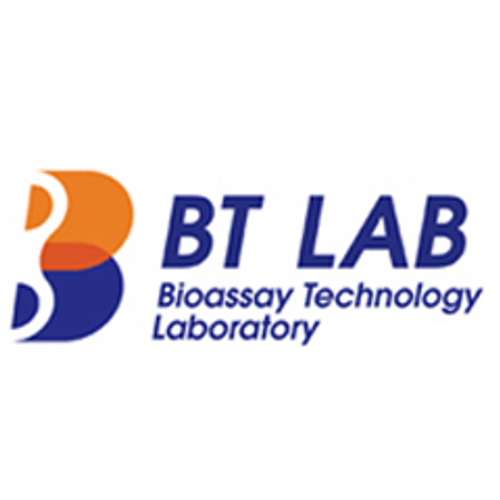Product Description
Human Zinc transporter ZIP4 (SLC39A4) ELISA Kit | AE18574HU | Abebio
Species Reactivity: Human (Homo sapiens)
Abbreviation: SLC39A4
Alternative Name: AEZ; FLJ20327; MGC74741; ZIP4; zinc transporter ZIP4
Application: ELISA
Range: 0.156-10 ng/mL
Sensitivity: 0.056 ng/mL
Intra-Assay: ≤5.9%
Inter-Assay: ≤8.2%
Recovery: 0, 84
Sample Type: Serum, Plasma, Other biological fluids
Detection Method: Sandwich
Analysis Method : Quantitive
Test Principale: This assay employs a two-site sandwich ELISA to quantitate SLC39A4 in samples. An antibody specific for SLC39A4 has been pre-coated onto a microplate. Standards and samples are pipetted into the wells and anySLC39A4 present is bound by the immobilized antibody. After removing any unbound substances, a biotin-conjugated antibody specific for SLC39A4 is added to the wells. After washing, Streptavidin conjugated Horseradish Peroxidase (HRP) is added to the wells. Following a wash to remove any unbound avidin-enzyme reagent, a substrate solution is added to the wells and color develops in proportion to the amount of SLC39A4 bound in the initial step. The color development is stopped and the intensity of the color is measured.
Product Overview: SLC39A4 gene as a candidate intestinal zinc-specific transporter within the susceptibility locus for the zinc-deficiency type of acrodermatitis enteropathica (AEZ) on 8q24.3. The gene is expressed as an mRNA of 2.5 kb in only a few tissues, i.e., kidney, colon, duodenum and jejunum. The duodenum and jejunum are crucial sites of zinc absorption. These transcripts encode proteins of 647 and 622 amino acids sharing the same C-terminal 583 residues. Computational analysis predicted that the larger protein has a cytoplasmic membrane location and a secondary structure characteristic of a ZIP protein, consisting of 8 transmembrane domains organized in 2 blocks of 3 and 5, respectively. These 2 blocks are separated by a variable intracytoplasmic metal-binding site.
Stability: The stability of ELISA kit is determined by the loss rate of activity. The loss rate of this kit is less than 5% within the expiration date under appropriate storage condition. The loss rate was determined by accelerated thermal degradation test. Keep the kit at 37°C for 4 and 7 days, and compare O.D.values of the kit kept at 37°C with that of at recommended temperature. (referring from China Biological Products Standard, which was calculated by the Arrhenius equation. For ELISA kit, 4 days storage at 37°C can be considered as 6 months at 2 - 8°C, which means 7 days at 37°C equaling 12 months at 2 - 8°C) .
 Euro
Euro
 USD
USD
 British Pound
British Pound
 NULL
NULL












